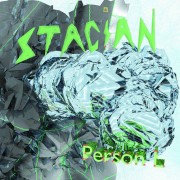
By the time Molly Nilsson released History, she had already established a fledgling cult status built on homemade YouTube videos and home-burnt Cdrs. Writing from a distance, it’s clear that History is the first classic album in her canon and arguably a classic of the 21st Century underground music panorama. While the methodology on History hadn’t changed from Nilsson’s previous 3 albums – it was recorded solo at The Lighthouse, Nilsson’s home studio based on a Berlin crossroads – on this record the songwriting reached a new peak and the emotional scythe cut deeper. Here, Nilsson managed to combine a cosmic, outward looking perspective with an intimate knowledge of the human condition and its place in these turbulent times. In truth, no other songwriter has excavated the modern psyche so clearly and perfectly.
The tracklist to Nilsson’s fourth album reads as an early greatest hits for Molly Nilsson followers and also serves as the perfect entry point to a whole world the artist has been building for the last 10 years. In Real Life crystalises the millenial obsession with relationships built online, with a generation paying for the baby boomer’s excesses with their anxiety towards the harshness of every day life. It’s a call to arms for a generation who fell in love on Skype. On I Hope You Die, one of Molly Nilsson’s most iconic songs, the songwriter flips the song title into a tale of doomed romance, a relationship based on miscommunications and the thrill of the other. It’s also one of the most heartfelt songs full of pathos written by anyone, an ode to obsession. Doomed romance, life lived on the flipside of day and the role of the outsider in society are themes that crop up through-out History. On Bottles Of Tomorrow, the narrator is sweeping up, in love with the night and examining the remains a society leaves behind.
On City Of Atlantis, Nilsson veers from the plaintive balladry she had begun to make her name with, embracing trance-like synth and dance music details to create an unlikely anthem using the mythological city as a means to comment on the patriarchal rendering of history by power. With by now trademark panache, she turns complicated subject matter into a glorious song that transforms into an ecstatic pop moment.
Hotel Home, another Nilsson classic, paints loneliness not as a debilitating anxiety, but as a powerful tool that propels the artist forward through her travels. It’s a song that hints at an endearing self-awareness also; the writer is never at home, living life on the road, content that “the world will find me when the time is ripe.”
LP / Digital Album

Twenty-Twenty is Molly Nilsson’s 8th album; the latest opus of an artist in a constant state of development and strength. Twenty-Twenty is about emerging from the husk of your old self, about binning the chrysalis and daring to stand up both to power, and also to your own limits. In 2018, we see the climate changing, democracy crumbling, inequality and injustice erupting. 2020 examines the near future, seeking out clarity, reflection, renewal and opportunity. It contains anthems so tall as to induce vertigo, leaving the taste of Euro Dance in your mouth, albeit without a four on the floor beat. Here, the pop auteur is haunted by the late Prince, channelling Courtney Love and Lou Reed, anger and love.
Recorded as ever in her own Lighthouse Studios and co-released with her imprint Dark Skies Association, the record is consistent in strategy and approach to past releases, yet on 2020 Nilsson pushes the limits of what can be said in the scope of a pop song even further. Despite working with used keyboard sounds that evoke memories of a distorted past, the sound is distinctly contemporary. The record drifts between playful punk methods and hi-fi ideas, strikingly clear through the fuzz of a surrounding world painted with reverb.
Rather than gracefully dissecting, 2020 rips apart personal neuroses and insecurities, looking for the roots of issues and the equation that, when solved, will produce the future. “I don’t care if the world is through, every night is new,” 2020 erupts with fist-in-the-air empowerment, a realization that if we’re all alone down here, we can still make it. Every Night Is New is a personal and societal manifesto, a slogan comprising the different layers that make this record Molly Nilsson’s most personal, evocative and emotionally packed in years. First single Serious Flowers is a naked confessional trance hit stripped of its beat. Centred around broken trust and friendship, Nilsson sings over suspenseful synth strings with a vocal delivery so inexact and honest, its vulnerability seems almost unaware of itself. Although very much in the vein of Nilsson’s production style on her recent albums, Days of Dust, accomplishes escape and breaks free from the past. There’s a carpe diem immediacy to this fast-paced Rock Song that belies Nilsson’s near-iconic self-contained delivery: “Like I had just been saved from a burning building of desire, I got back up and I ran right into the fire.” It’s so immediate, and speaks so perfectly about the nature of desire, that you wonder how you’d never thought about it like that before.
LP / Digital Album

STACIAN is Person L is Oakland resident, solo artist and academic Dania Luck. Beginning in the American Mid West, Stacian has been an ongoing Bay Area concern since 2008, deeply involved in the minimal wave and underground electronic music scene. A dystopian vision of alienated humanity, broken communications and technoid mal-forms, Person L is her most fully developed full length and a leap forward from 2012’s Songs For Cadets. Moving away from the primitive Cold Wave of previous work, Person L manages to create a bleak dystopia without relying on Ballardian cliche, though still invoking concrete prisons and urban disassociation. Person L is a throbbing, murky underworld that revels in imperfections, a submersive, digital swamp bleeding through the club.
Themes of humanoid alienation and identity confusion abound. Person L is the nominal (and sole) band member of STACIAN, a manifestation of Luck’s that re-creates a near-human face in the mirror. Album opener Volx is a massive stomper, 909 kicks bringing an almost electro-glam thump into the stereo field. Luck’s skill as Person L and as STACIAN is in maximilising minimalism. Volx is a simple composition, an arpeggiated analog synth and simple kick-snare but it creates the drama Luck’s vocal thrives on. Headstand is similarly huge sounding, though here the track unfolds gradually with synth strings eeking out a simple melody before the catastrophising kick ramps up the pressure. It’s a wonderful exercise in abstraction vs. body moving dynamics. Album single Telephonix is the closest thing to a conventional pop song on Person L, with murky electronics belying a thrilling Cold Wave dancer. We’re lost in the throes of miscommunication: in placing our trust in electronic communications we’ve divorced ourselves from human interaction.
On Side 2, Dirgent heralds a darker portion of the album. A slow burner with a blown-out low end anchoring the doom, it marks a dark wave of distortion that swells up and consumes the listener. The narrative turns in on itself Remote Cntl, ironically marking the most human of the tracks here. Though the album is devoid of any overt feminist sentiments, here Stacian covertly samples a male voice man-splaining electronic music before burying him in electronic sludge. It’s absurdly thrilling. Spooky Action At A Glance takes John Carpenter-esque atmospherics into Stacian’s Maximalist approach, the horror blow up to kitch, day-glo proportions. Album closer gNoMoN takes a dub rhythm and blasts it into the Cold Wave outerverse, a menacing doom to close Person L.
LP / Digital Album

For The Modern Institute’s self-titled first vinyl document, the practices of audio technicians Richard McMaster, Laurie Pitt and James Stephen Wright are brought into sharp focus, the initial analyses of a project which examines the rituals of performance, the signifiers of bourgeois culture and the absurdities inherent in the middle class art gaze. While undoubtedly disturbing in execution, it’s a succinct reminder of the tension between lazy, electronic music tropes and the essential, quizzical attitude frequently lacking in the technoid culture yet abundant in Glasgow’s agent provocateurs.
Seen through the frame of primary music generators McMaster and Pitt’s previous music projects – Golden Teacher, General Ludd – The Modern Institute’s recorded output is an oblique, strategic examination of rhythm and the spaces between. Rhythm is often re-defined and re-formed through out The Modern Institute, with the easy 4/4, communally cohesive beats of the Teacher and the Ludd some way off.
Opener Black Blood is a case in point, with a elusive pattern providing a warped, skeletal framework for Wright to smother. The atmosphere is austere, aggressive, clinical as a gallery wall after the exhibition has failed. The yawning, sub-bass of False Beards and Diamond Hooves hacks at the exhibition floor opening up punishingly alien chasms. The narrator’s deadpan poesy, battling against the brutalist backdrop, reminds the listener of early industrial pioneers Cabaret Voltaire, not least in the unmistakably northern accent. Side A closes out on the first attempt by The Modern Institute to break into a recognizable pattern, though rendered on Destroy Logic as a dry destruction of a Bashment rhythm. Arabic Eight is nightmarish, a Normal deconstruction of art music. A nonsensical, dadist mutation of electronic dance music, Intelligent Dance Music with no intelligence, dance or Music. Wright intones “when I was younger you used to say you weren’t in it for the money,” taking down conceptions of artistic integrity, inspiration and muse. On Springloaded, we’re still deep in an alien lifeform’s insides, viewing the tropes the art industry uses to sell itself, splashes of digital distortion and burps crossfiring across the stereofield. Shiver And Quiver ends The Modern Institute, sounding like all the cities’ alarms simultaneously set off to the beat of the LPs only 4/4 beat, here juddering and unnaturally fast. Ask questions, just don’t ask for answers.
LP / Digital Album
|




